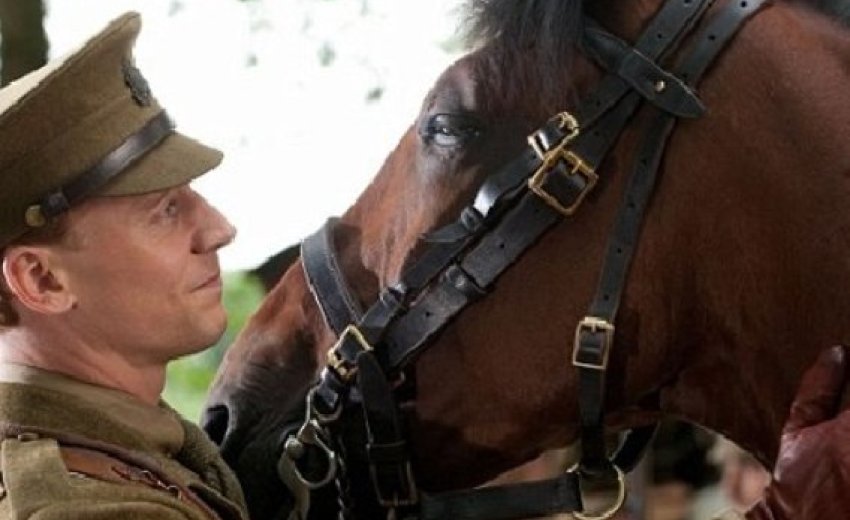'The Sikh' who WALKED back to Britain from Russia after spending years delivering supplies to troops
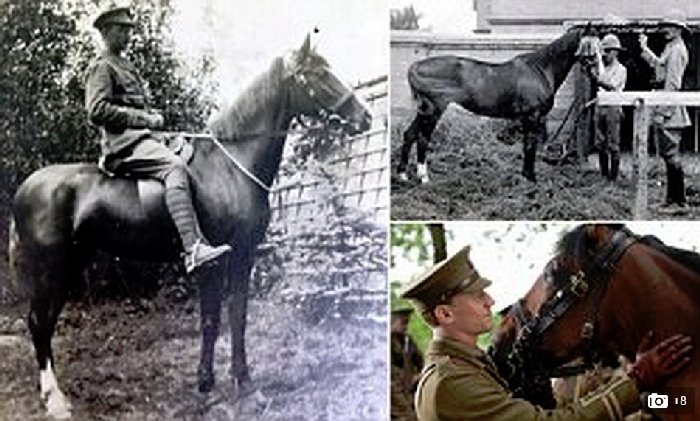
- Horse, nicknamed 'The Sikh', delivered supplies to First World War troops
- Animal arrived at the frontline with devoted master Lieutenant A.C. Vicary
- She was one of the one million horses sent to Western Front during war
- Once war finished, horse walked back to England from southern Russia
- Incredible tale echos plot of Michael Morpurgo's award-winning War Horse
22 Jan 2015: The incredible story of a real-life 'War Horse' that dodged shellfire to deliver supplies to troops before walking back to the UK from Russia has been uncovered for the first time.
The horse - nicknamed The Sikh - dodged shellfire and grenades as it delivered supplies to bloodied and battered troops on the trenches during the First World War.
After the war ended in 1918, the animal walked all the way back from southern Russia to Devon, England.
It echoes the plot of War Horse, the Michael Morpurgo novel adapted into an award-winning West End play and Steven Spielberg film.
Scroll down for video
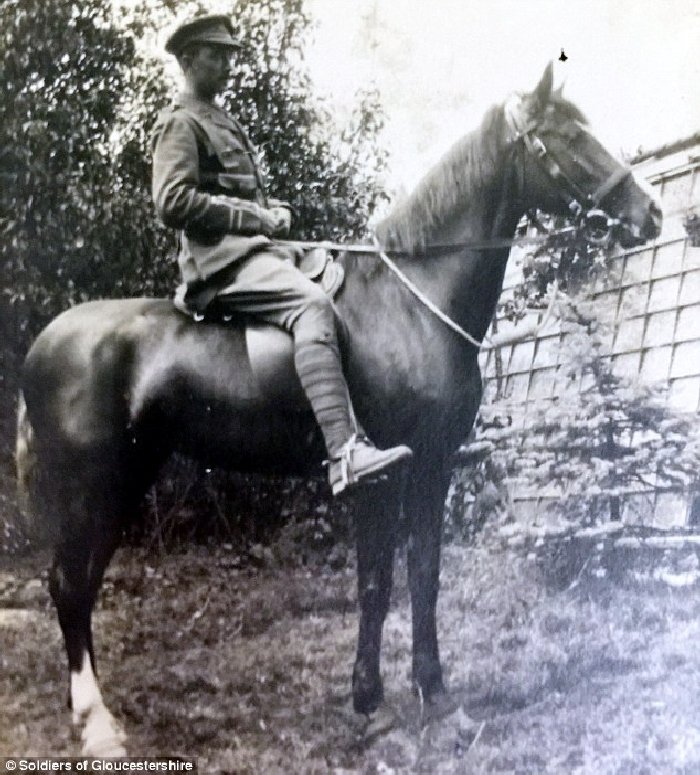 |
| The horse - nicknamed The Sikh - was one of the one million horses sent to battle during the First World War. The animal (pictured with Lt. Vicary) dodged shellfire and grenades as it delivered supplies to bloodied troops
|
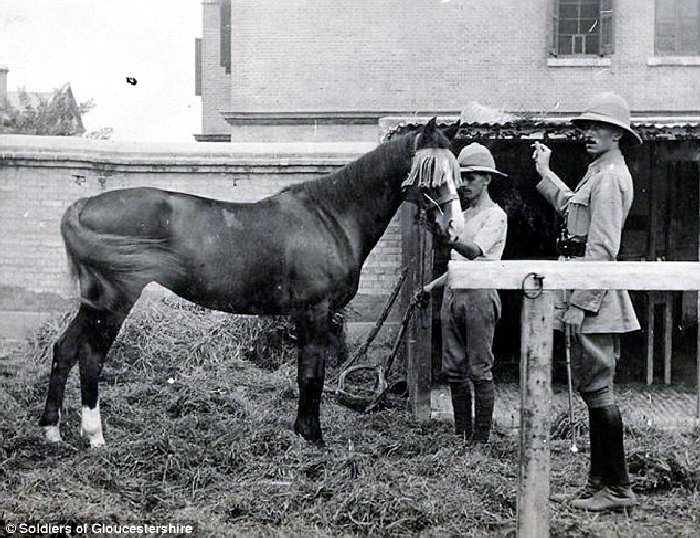 |
| After the war ended, the horse walked all the way back from southern Russia to Devon, England. Pictured: The Sikh with owner Lieutenant Vicary and another officer in Tientsin, China, prior to the outbreak of the war
|
The incredible story was unearthed by Chris Chatterton, the curator of the Soldiers of Gloucestershire Museum, last week.
He said: 'I was reading a book about The Glosters and I came across a mention of The Sikh.
'I did some more digging and it really is a remarkable story. She was viewed by many men in the Battalion as an Omen of good luck.
'A statue to honour The Sikh would be great. We will certainly be doing something at the museum to commemorate her.'
The Sikh arrived at the front line with her devoted master Lieutenant A.C. Vicary, of the Gloucestershire Regiment Vicary, and the regiment's Second Battalion in Ypres.
She was one of the million horses sent to the Western Front during the First World War.
She was lucky to survive the conflict as only 67,000 returned home, after 933,000 tragically died.
The brave horse was bred in Australia and sold to India. She arrived in North China with the 36th Sikh Regiment where passed into the ownership of Lt Vicary in 1913.
When the battalion was given orders to return to Europe for war in November 1914, Vicary obtained special permission to take The Sikh with him.
She was the only horse to accompany the Battalion from China, braving a treacherous eight-week boat journey from China to Europe.
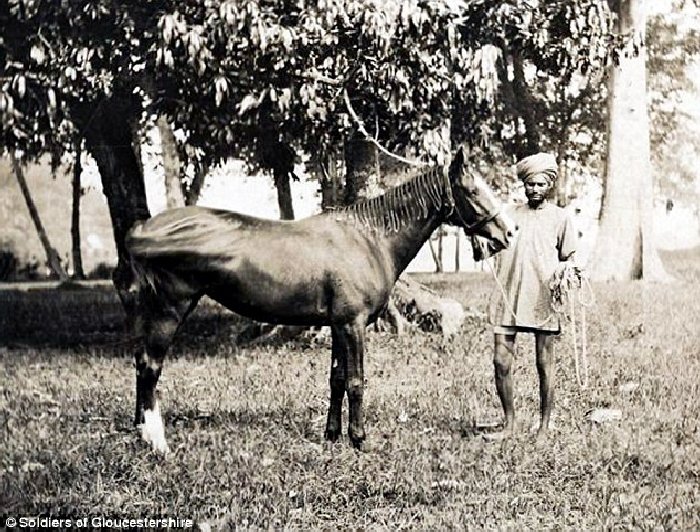 |
| The incredible tale of the real-life War Horse was unearthed by Chris Chatterton, the curator of the Soldiers of Gloucestershire Museum, last week. Pictured: The Sikh stands in a field with a groomsman in Singapore
|
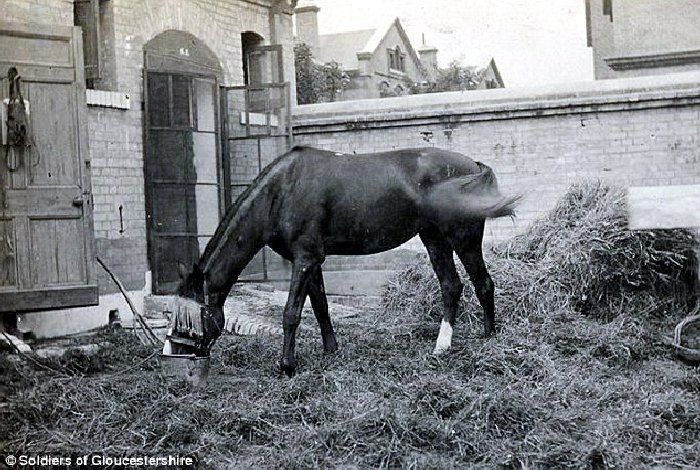 |
| The Sikh (pictured) was a loyal companion to Lt. Vicary throughout the entire the First World War, supporting him and his troops in the reserve lines and support trenches. The horse later retired in rural Devon, England
|
The Sikh spent the voyage in a makeshift open box on the deck - exposed to stifling heat and typhoons as the ship travelled to the UK, dodging German battle ships in the Mediterranean, according to the ship's log.
While the soldiers were banned from sleeping on deck because of atrocious weather, the horse was left out in the elements and only allowed to stretch her legs when officers went ashore at Hong Kong, Singapore, Port Said and Gibraltar.
The Sikh was a loyal companion to Vicary throughout the entire the First World War, supporting him and his troops in the reserve lines and support trenches.
The courageous pair led the 16th Gloucestershire Regiment in their victorious march through Serbia and Bulgaria.
The Sikh managed to survive despite the desperate conditions for war horses.
|
Steven Spielberg's epic dramatisation of War Horse
|
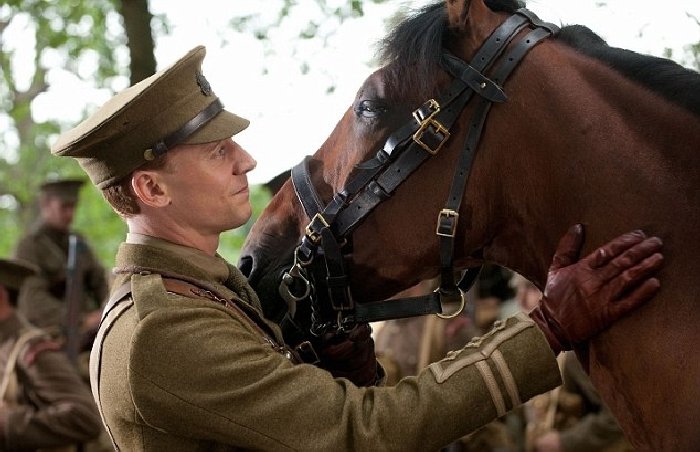 |
| The incredible tale echos the plot of Michael Morpurgo's award-winning novel War Horse, which was adapted into a film in 2011. Pictured: Actor Tom Hiddleston as Captain James Nicholls with horse Joey in the film
|
 |
| The real-life War Horse even ended up retiring in Devon where Mr Morpurgo took inspiration for his novel
|
On average, the British Army lost 15 per cent of its horses every year of the conflict, though just a quarter of horse deaths were caused by enemy action, according to the War Office's Statistics of the Military Effort of the British Empire during the Great War, 1914-1920.
The Sikh proceeded with the Regiment to South Russia, before following them home through Turkey, Greece, Italy and France once the war ended in 1918.
Vicary ended the war as a Lieutenant Colonel, having one a Military Cross and two Distinguished Service Orders medals for his gallantry.
After her illustrious and adventurous life as a war horse, The Sikh died in peaceful retirement at Vicary's home in Devon.
Museum curators have noted that spending the remainder of her life in Devon, was reminiscent of the hero in best-selling Morpurgo's book.

